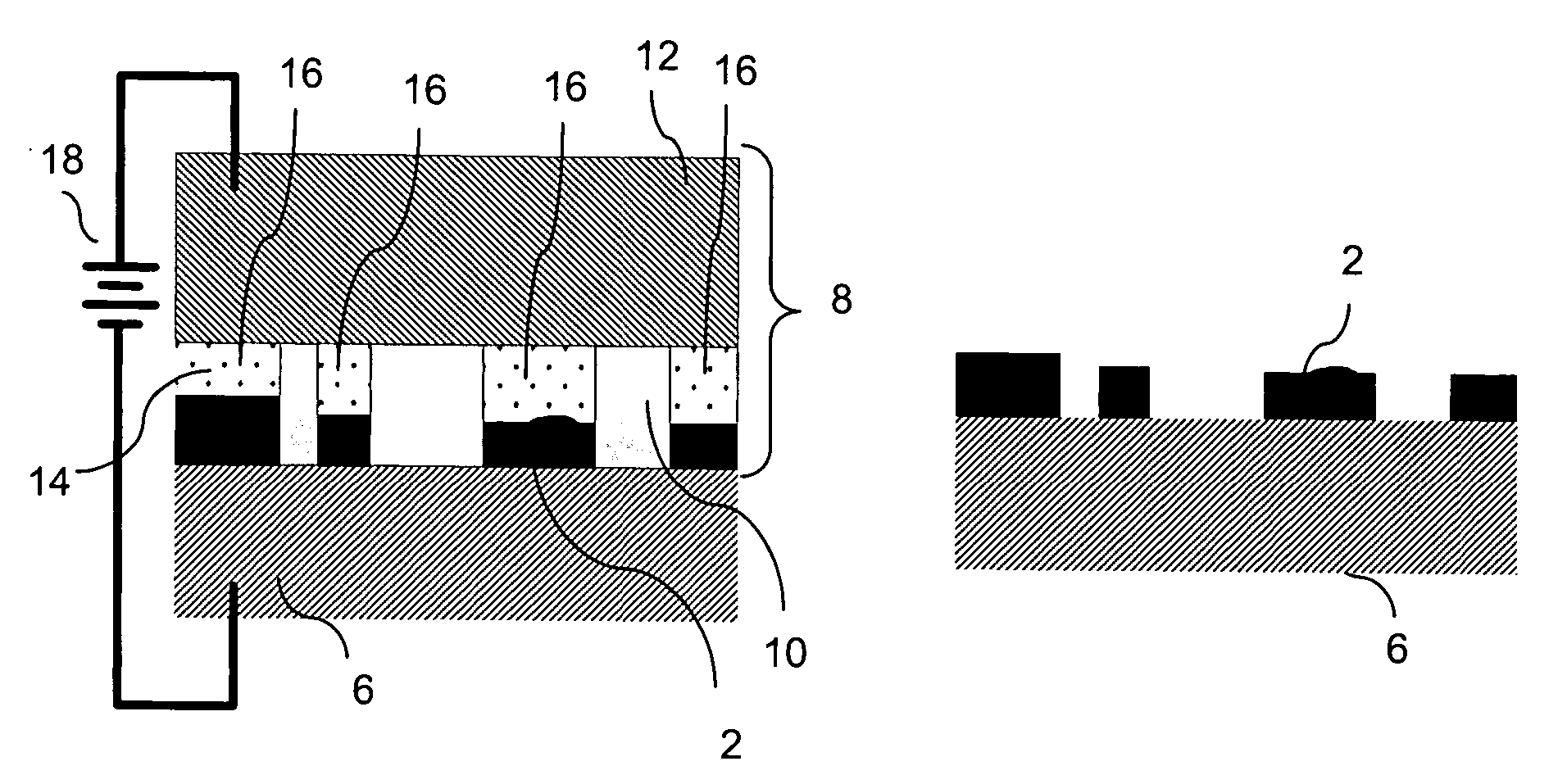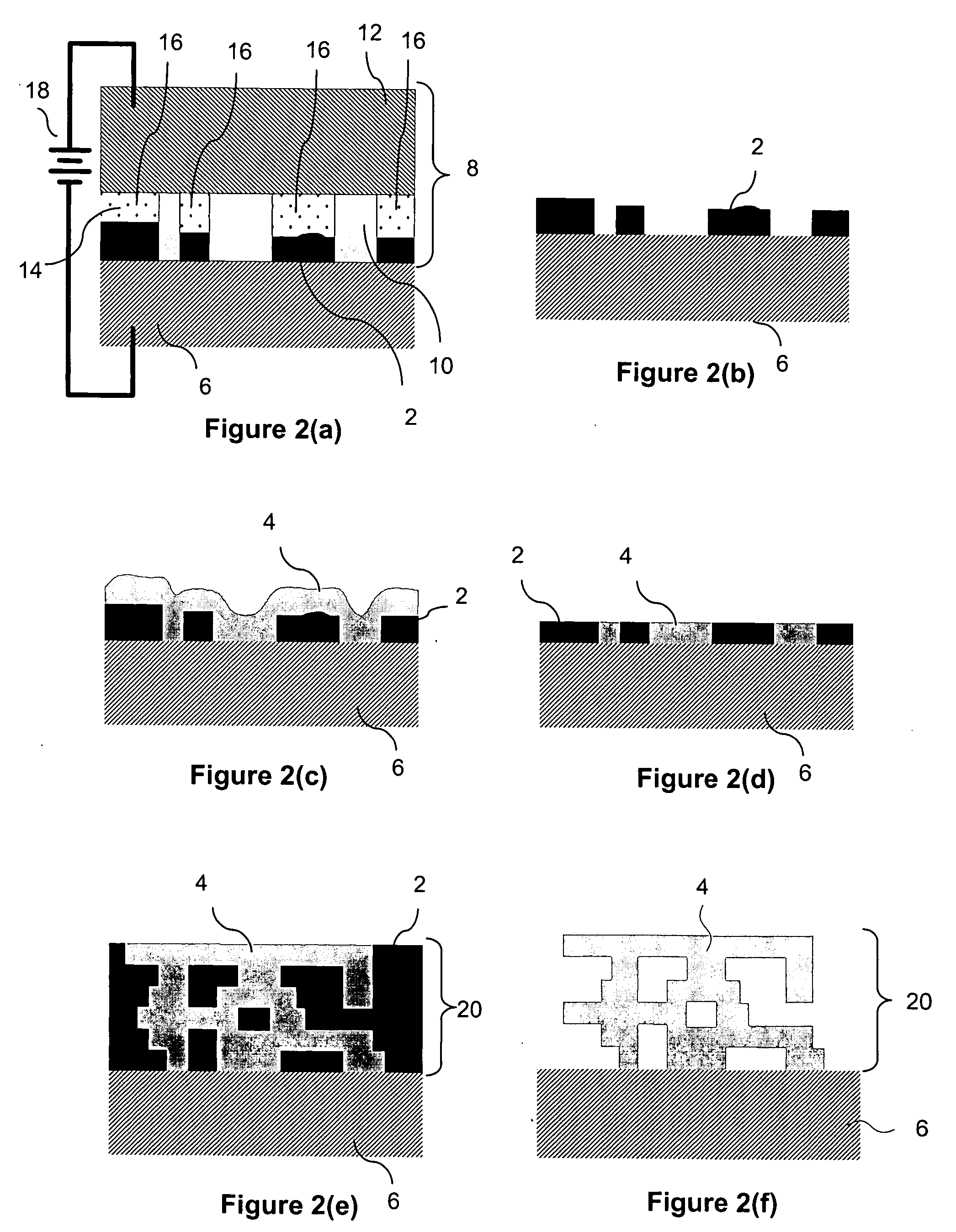Electrochemically fabricated structures having dielectric or active bases and methods of and apparatus for producing such structures
a technology of active bases and dielectric bases, applied in the direction of microstructural devices, coatings, microstructures, etc., can solve the problems of destructive separation of masking materials from substrates, and achieve the effect of expanding the capabilities of electrochemical fabrication processes and expanding the potential applications availabl
- Summary
- Abstract
- Description
- Claims
- Application Information
AI Technical Summary
Benefits of technology
Problems solved by technology
Method used
Image
Examples
Embodiment Construction
[0060] FIGS. 1(a)-1(g), 2(a)-2(f), and 3(a)-3(c) illustrate various features of one form of electrochemical fabrication that are known. Other electrochemical fabrication techniques are set forth in the '630 patent referenced above, in the various previously incorporated publications, in various other patents and patent applications incorporated herein by reference, still others may be derived from combinations of various approaches described in these publications, patents, and applications, or are otherwise known or ascertainable by those of skill in the art from the teachings set forth herein. All of these techniques may be combined with those of the various embodiments of various aspects of the invention explicitly set forth herein to yield enhanced embodiments. Still other embodiments be may derived from combinations of the various embodiments explicitly set forth herein.
[0061] FIGS. 4(a)-4(i) illustrate various stages in the formation of a single layer of a multi-layer fabricat...
PUM
| Property | Measurement | Unit |
|---|---|---|
| three-dimensional structure | aaaaa | aaaaa |
| dielectric | aaaaa | aaaaa |
| electric current | aaaaa | aaaaa |
Abstract
Description
Claims
Application Information
 Login to View More
Login to View More - R&D
- Intellectual Property
- Life Sciences
- Materials
- Tech Scout
- Unparalleled Data Quality
- Higher Quality Content
- 60% Fewer Hallucinations
Browse by: Latest US Patents, China's latest patents, Technical Efficacy Thesaurus, Application Domain, Technology Topic, Popular Technical Reports.
© 2025 PatSnap. All rights reserved.Legal|Privacy policy|Modern Slavery Act Transparency Statement|Sitemap|About US| Contact US: help@patsnap.com



